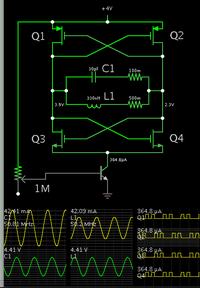moha438626
Newbie level 4
I am working in full bridge series resonant frequency. and the results shows that the current was not flowing probably. beside the L and C frequency was measured to be the same with switching frequency. so is nay one can help me about how can I tune the resonant tank to work at it is resonant frequency???
TQVM
TQVM
